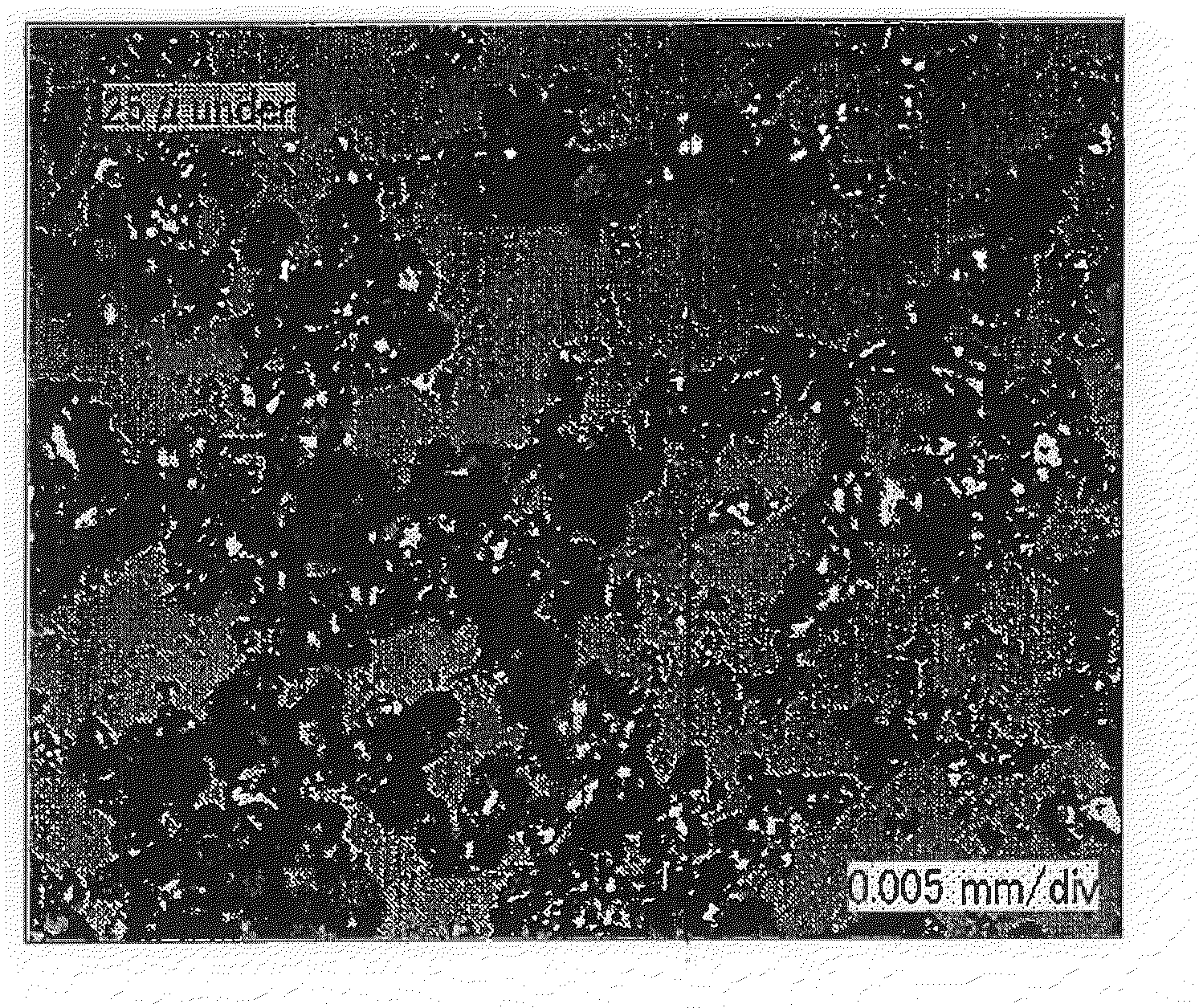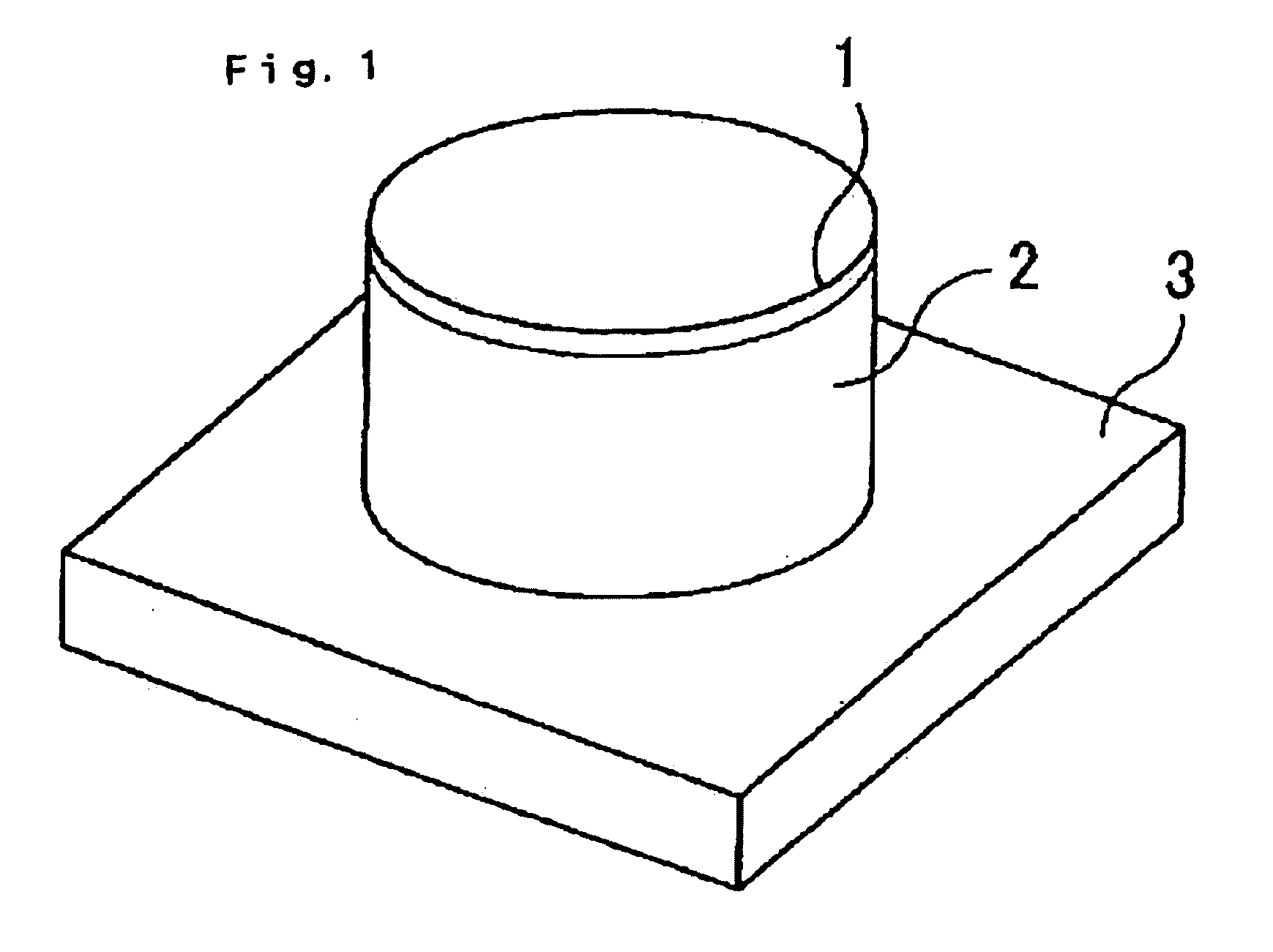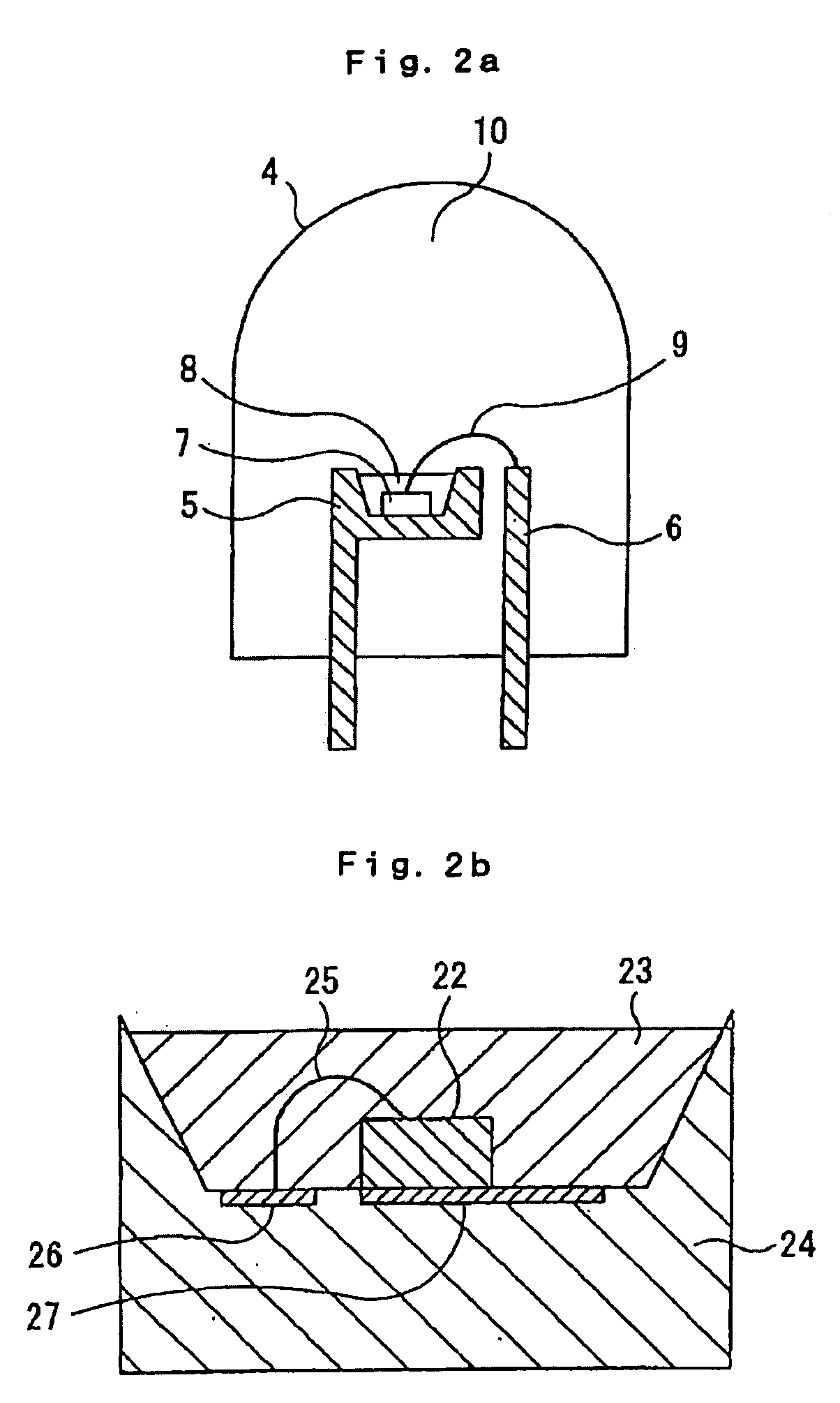Nitrogen-containing alloy and method for producing phosphor using the same
- Summary
- Abstract
- Description
- Claims
- Application Information
AI Technical Summary
Benefits of technology
Problems solved by technology
Method used
Image
Examples
reference example 1
[0659]Ca3N2 (manufactured by CERAC Inc., 200-mesh passed), AlN (F grade, manufactured by Tokuyama Corp.), Si3N4 (SN-E10, manufactured by Ube Industries, Ltd.), and Eu2O3 (manufactured by Shin-Etsu Chemical Co. Ltd.) were weighed in an argon atmosphere in such a manner that the ratio of Eu to Ca to Al to Si=0.008:0.992:1:1 (molar ratio). These materials were mixed using an alumina mortar. The resulting raw material mixture was placed in a boron nitride crucible. The Crucible was placed in an atmosphere furnace. After the furnace was evacuated to 1×10−2 Pa, the evacuation was stopped. Nitrogen was charged into the furnace in such a manner that the pressure in the furnace was increased to 0.1 MPa. The mixture was heated to 1,600° C. and maintained at 1,600° C. for 5 hours. The resulting fired product was milled with an alumina mortar. The resulting particles each having a size of 100 μm or less were collected to prepare a phosphor. The phosphor had a peak emission wavelength of 648 nm ...
example 1
Production of Alloy
[0663]Raw material metals were weighed in such a manner that the composition ratio of metal elements, i.e., the ratio (molar ratio) of Al to Si, was 1:1. The raw material metals were charged into a graphite crucible and melted in an argon atmosphere with a high-frequency induction melting furnace. The molten metal mixture was poured from the crucible into a mold and then solidified, whereby an alloy (a mother alloy) in which the composition ratio of the metal elements, i.e., the ratio of Al to Si, was 1:1, was obtained.
[0664]The mother alloy and other raw material metals were weighed in such a manner that the ratio of Eu to Sr to Ca to Al to Si was 0.008:0.792:0.2:1:1 (molar ratio). After the furnace was evacuated, the evacuation of the furnace was stopped and argon was then introduced into the furnace until the pressure in the furnace reached a predetermined value. The mother alloy was melted in a calcia crucible. Sr, Eu, and Ca, which are the raw material metals...
example 2
Post-Treatment Step
[0679]The phosphor prepared in Example 1 was placed in water weighing ten times as much as the phosphor at room temperature. The mixture was stirred for 10 minutes with a stirrer so as to be dispersed. After the dispersion had been allowed to stand for one hour, the precipitation of the phosphor was observed. The phosphor was separated by filtration. This procedure was repeated 15 times. The phosphor was dehydrated by suction filtration. The phosphor was placed in 0.5 N hydrochloric acid weighing ten times as much as the phosphor. The mixture was stirred for 10 minutes with the stirrer so as to be dispersed. After the dispersion had been allowed to stand for one hour, the phosphor was separated by filtration. The phosphor was dispersed in water weighing ten times as much as the phosphor and then filtrated. This procedure was repeated three times. The electrical conductivity of a supernatant liquid was measured as described above and determined to be 1.90 mS / m. Aft...
PUM
| Property | Measurement | Unit |
|---|---|---|
| Temperature | aaaaa | aaaaa |
| Temperature | aaaaa | aaaaa |
| Temperature | aaaaa | aaaaa |
Abstract
Description
Claims
Application Information
 Login to View More
Login to View More - R&D
- Intellectual Property
- Life Sciences
- Materials
- Tech Scout
- Unparalleled Data Quality
- Higher Quality Content
- 60% Fewer Hallucinations
Browse by: Latest US Patents, China's latest patents, Technical Efficacy Thesaurus, Application Domain, Technology Topic, Popular Technical Reports.
© 2025 PatSnap. All rights reserved.Legal|Privacy policy|Modern Slavery Act Transparency Statement|Sitemap|About US| Contact US: help@patsnap.com



